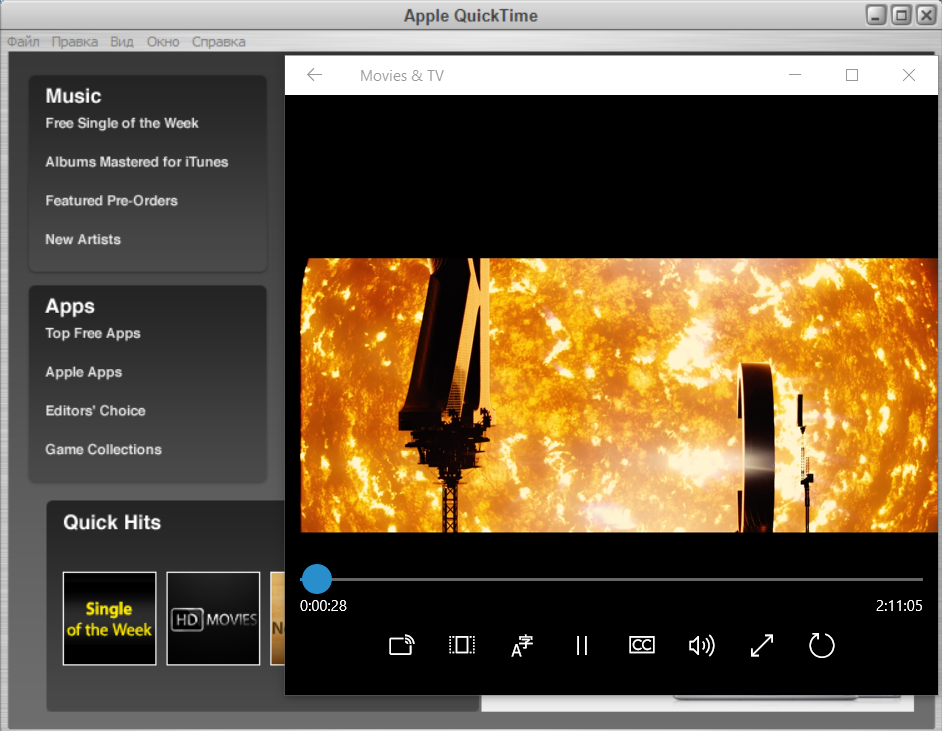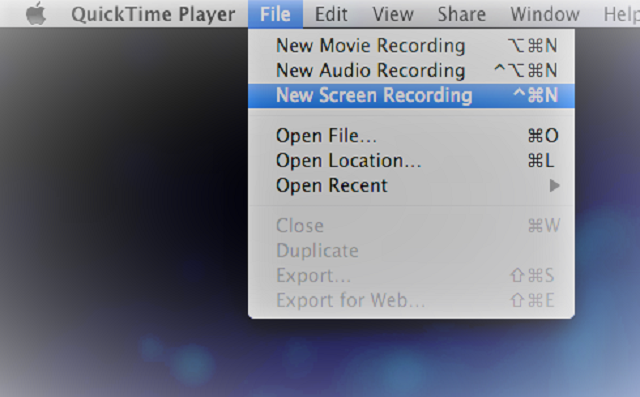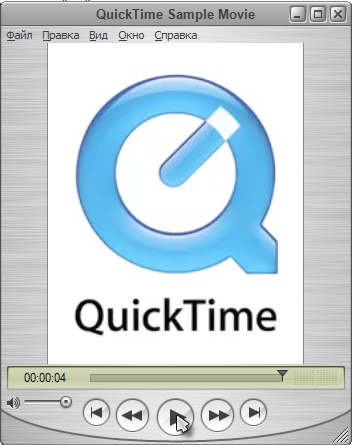
- #Quicktime player subtitles for mac#
- #Quicktime player subtitles movie#
- #Quicktime player subtitles pro#
- #Quicktime player subtitles plus#
In TextWrangler, Set Line breaks to Unix(LF), choose UTF8 encoding in order to correctly display special characters.In TextWrangler or Notepad, please click menu File->Save As, change file extension to “.A blank line indicating the start of a new subtitle.

The time format used is hours:minutes:seconds:milliseconds, with the milliseconds field precise to three decimal places.
The time that the subtitle should appear on the screen, and then disappear. A number indicating which subtitle it is in the sequence. Notes: SRT consists of four parts, all in text. #Quicktime player subtitles for mac#
Open TextWrangler for Mac user (TextWrangler can be downloaded here and is also available on all DMC video editing stations) or Notepad for PC user. Create SRT with TextWrangler or NotePad. Go to File > Export As., continue to click on Export, and be sure to save as SubRip(*.srt) file type. Repeat the step 2 until all the lines are inputted. Try to make the start and end timecode as accurate as possible. #Quicktime player subtitles pro#
Use spacebar to play and pause your video with any media player or within Final Cut Pro X while creating SRT file with Aegisub.Press Enter to add this line to the sequence window below. You can adjust the timecode according to your video. The first timecode is a start timecode for this line of text second timecode is the finish timecode the third timecode is the line duration. Open Aegisub, simply enter your caption text alongside a start and finish timecode.All DMC video editing stations have Aegisub installed and it looks like this:.To create SRT file, you can either use Aegisub freeware at the DMC or simply use TextWrangler, Notepad, or any text editor. If your video doesn’t include any subtitles, you can create and add a.
#Quicktime player subtitles movie#
The purpose of srt subtitle file is to be used with desired movie file together to display subtitles when you play video file by any player supporting srt subtitles. This format is supported by most video players and subtitle creation programs. SubRip caption files are named with the extension.There are many subtitles formats, such as SRT, WebVTT, DFXP/TTML, SCC, and SAMI files.They also act as metadata that helps your videos show up in more places on YouTube.
 Subtitles can be translated into different languages which help you reach broader audience. This is important for all video publishers especially educational institutions who need to comply with accessibility laws and internal policies. Subtitles enable deaf and hard of hearing users to watch videos. The benefit of adding subtitle to videos: Subtitles provide viewers with a video’s dialogue in written form and can be used to translate the spoken language.
Subtitles can be translated into different languages which help you reach broader audience. This is important for all video publishers especially educational institutions who need to comply with accessibility laws and internal policies. Subtitles enable deaf and hard of hearing users to watch videos. The benefit of adding subtitle to videos: Subtitles provide viewers with a video’s dialogue in written form and can be used to translate the spoken language. 
#Quicktime player subtitles plus#
Captions include subtitles plus a written description of what is occurring in their videos for viewers who might not be able to hear or understand the sound. Closed captions are meant for viewers who cannot hear the audio and need a text description of everything audible to a normal viewer in a video.The difference between subtitle and caption: In other words, subtitles are meant for people who can hear the audio but want the dialogue provided in text form, mainly for better understanding (for example, an English translation of a different language being spoken in a video).Ĭlosed captions, on the other hand, describe the subtitles when sometimes speaking in addition to describing the background noise and other audio cues. This is why you'll mainly see subtitles in movies and TV shows. Subtitles are meant to offer a text alternative to spoken dialogue in a video. The terms "subtitles" and "closed captions" are sometimes used interchangeably, but they're actually two different things that are mainly meant for two different audiences. What's the Difference Between Subtitles and Closed Captions? You can enable them using the Subtitles for the Deaf or Hard-of-Hearing (SDH) feature that is present in the accessibility settings in macOS, which then makes them appear whenever you are watching a video with closed captions available. Closed captions are very easy to use on your Mac.







 0 kommentar(er)
0 kommentar(er)
